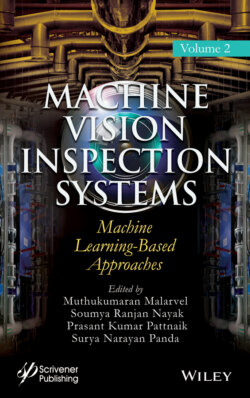Читать книгу Machine Vision Inspection Systems, Machine Learning-Based Approaches - Группа авторов - Страница 32
2.4.2 Within Language Classification
ОглавлениеIn n-way testing, we use characters from different languages, but the accuracy obtained for individual language is the main determinant for research. Language-wise classification accuracy was evaluated by preparing one-shot tasks with characters taken from a single alphabet, and the results were illustrated in Table 2.3. These results are based on the nearest neighbour, 1-shot capsule network classifications within individual alphabets. We have selected the Nearest neighbor method because it is a simpler classification method that uses raw pixel values. Thus, it is evident that language level classification accuracy is proportional to the number of characters in the language. Another critical factor that influences accuracy is the structural similarity between characters.
Figure 2.5 Omniglot n-shot n-way learning performance.
Table 2.3 Classification accuracies within individual alphabets.
| Model | Characters | Nearest neighbor | 1-shot capsule network |
|---|---|---|---|
| Aurek-Besk | 25 | 6.40% | 84.40% |
| Angelic | 19 | 6.32% | 76.84% |
| Keble | 25 | 2.00% | 71.20% |
| Atemayar Qelisayer | 25 | 4.00% | 62.80% |
| Tengwar | 24 | 3.33% | 62.08% |
| ULOG | 25 | 3.60% | 61.60% |
| Syriac (Serrto) | 22 | 6.36% | 58.64% |
| Atlantean | 25 | 2.80% | 58.00% |
| Avesta | 25 | 5.20% | 57.60% |
| Cyrillic | 44 | 2.05% | 57.05% |
| Sinhala | 60 | 1.00% | 56.22% |
| Ge`ez | 25 | 1.60% | 52.40% |
| Mongolian | 29 | 4.83% | 52.07% |
| Glagolitic | 44 | 1.82% | 50.68% |
| Manipuri | 39 | 3.08% | 50.51% |
| Malayalam | 46 | 3.26% | 45.87% |
| Tibetan | 41 | 2.93% | 45.61% |
| Sylheti | 27 | 4.07% | 40.37% |
| Gurmukhi | 44 | 2.27% | 38.41% |
| Oriya | 45 | 1.56% | 33.33% |
| Kannada | 40 | 1.00% | 29.25% |
For further analysis, we consider the alphabet models with the same number of characters and those have shown the highest and lowest classification accuracies. Consider the characters of Gurmukhi (38.41% accuracy) and Cyrillic (57.05% accuracy), which has the same number of characters (44), but accuracy differs by 18.64%. The accuracy difference could be due to the structural similarity between characters in those alphabets. Figure 2.6 shows the two alphabets. Due to the same reason, we get lower accuracies for within language classification compared to mixed language n-way classification as described in Section 2.4.1.
Further, in an attempt to boost the accuracies in classification, we have used n-shot learning, while keeping 10 images for each character in the alphabet as the reference set and 10 images for averaging the results. By this experiment, we obtained 7 to 15% accuracy improvement resulting in 94% highest accuracy for Aurek-Besh language and 40% lowest accuracy for Oriya language, respectively.
